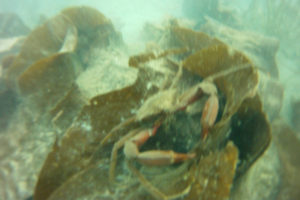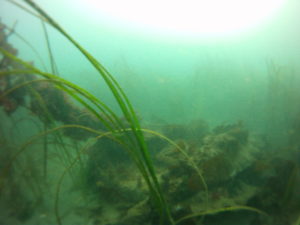Robin Hirsch brought our attention to an issue that will be very relevant to some of our readers, the provision in the Washington Department of Natural Resources (DNR) Habitation Conservation Plan (HCP) that applies to how buoys are anchored on DNR administered seabeds. The proposal is that only embedded, and not concrete disc, anchoring method will be allowed.
Hirsch and spouse Jimmy Roser operate Baja Boat Works on Orcas Island, which installs and maintains mooring buoys. She wants to make boaters aware of the situation and get their comments in by tomorrow’s deadline, and makes a strong case that concrete anchors should continue to be allowed, both because they’re less expensive to install and because they provide marine habitat.
Hirsch says, “The reason the DNR gives for not allowing concerete anchors any more is because they do not want any profile on the seafloor. That is their management plan! A concrete anchor looks like a rock and then se life grow on it. What is wrong with that?”
She adds, “This is wrong on all sorts of levels and the DNR is going beyond the scope of their authority. The photos attached were taken last Oct on the west side of Orcas Island in Presidents Channel. The photos show a concrete disc mooring in eel grass supplying habitat for kelp and a Northern Kelp Crab. The DNR plans to have these replaced with embedded anchors in the next 10 years! The owners of the moorings can not afford that. An embedded anchor has exposed, galvanized metal (swivel and rod) on the seafloor. The pdf attached shows an embedded marine anchor choice for the Salish Sea (MR-SR) Page 2’s chart discusses the holding limitations of the kind of sea floor we have in the Salish Sea (deep mud).
 The DNR only will allow a small profile on the seafloor (rod and swivel) of an embedded anchor opposed to a concrete disc that settles into the mud and supplies habitat and superior holding. In conclusion, the DNR proposal would mean the consumer must get an embedded anchor that will eventually be worthless, costs at least twice as much (concrete disc is $2000 vs embedded $4800, plus) and does not even supply habitat.”
The DNR only will allow a small profile on the seafloor (rod and swivel) of an embedded anchor opposed to a concrete disc that settles into the mud and supplies habitat and superior holding. In conclusion, the DNR proposal would mean the consumer must get an embedded anchor that will eventually be worthless, costs at least twice as much (concrete disc is $2000 vs embedded $4800, plus) and does not even supply habitat.”
Comments can be emailed to wfwocomments@fws.gov and must have the subject “WDNR Aquatic Lands HCP DEIS.” Here is the web page to weigh in on the mooring buoy issue, and here is a link to a good explanation to the HCP’s intent.
For the nwyachting.com readers out there who are considering installing or replacing buoys, it’s probably worth studying and weighing in on this matter. This issue is part of a much larger one, that of the HCP itself, something that deals with a complex environmental and political history. There are many elements of that will be bubbling up in the coming months, and we’ll be tapping in to our resources at the DNR and elsewhere to keep tabs on them.


